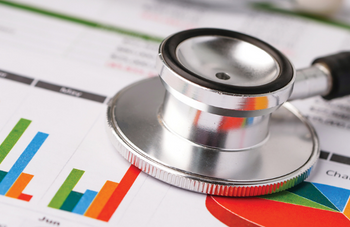Financial Wellness-Review and Tweak

As we approach the end of the year, it's important to take time to review your current financial health and reevaluate your goals for the upcoming new year.
Step 1: Track your spending
Are you being responsible in tracking your spending? You can do this with a budgeting app, by keeping a running estimate of how much you’re spending in each category in your head, or by reviewing your receipts and checking account statements at the end of each month. Knowing where your money is going will help you make more responsible spending decisions in the future.
Step 2: Create and stick to a budget
Budgets need to be reviewed and tweaked every few months or so to ensure they still work for your present life circumstances. Fluctuations in consumer prices, your income, and various living expenses need to be accounted for in your budget. If your budget no longer works for you, make some changes until it does again.
Step 3: Pay down debt
Take a minute to review where you are in your debt-paying journey. Have you made as much progress as you’d hoped to at this point in time? Can you beef up any payments and make that debt disappear sooner?
Step 4: Talk money with your partner
Have you had the big money talk with your partner? Are you remembering to touch base on money matters on a regular basis? Do you need to revisit any of the topics you’ve discussed, such as sharing accounts, dividing expenses, and saving up for a shared dream?
Step 5: Spend mindfully
Review some of your recent purchases. Are you blowing money on stuff you don’t need instead of relieving stress and emotional overload in a healthy manner? If so, look for better ways to de-stress and remember to avoid temptation by disabling one-click purchases and staying away from stores that trigger your overspending impulse.
Step 6: Pay it forward
The money, time, and smiles we share are the only moments that are truly ours. Are you remembering to pay it forward? You can volunteer at a soup kitchen or homeless shelter, donate clothing to the less fortunate and help your favorite charity.
Step 7: Pay yourself first
Are you remembering to feed your savings? Remember to prioritize having an emergency fund with three to six months’ worth of living expenses. Once you have that funded, you can work on saving toward long- and other short-term saving goals by automating a monthly transfer from your checking account to your savings account. At this time, you may want to consider increasing the amount you are putting into savings each month by trimming some discretionary expenses.
Step 8: Know when and how to indulge
Living a spartan lifestyle without indulgences can make you lose your budget–and fast! Instead, make sure you know when and how to indulge. Are you remembering to work your selected just-for-fun expenses into your budget so you can indulge without the guilt? Now is a good time to look back at your indulgences to determine if they were good uses for your money.
Step 9: Check your credit score
How are those three magic numbers doing? If you’ve been following the rules for boosting and maintaining a high credit score, like paying your bills on time, having several active cards, and keeping your credit utilization low, your score should have improved during these last few months, opening the door to low-interest loans and more.
Step 10: Think about retirement
Have you opened and furnished retirement accounts at work and beyond? Take the time to review these accounts and assess whether your funds have reached the place you’d hoped they would by now.
Step 11: Start investing
Have you taken the beginner steps toward investing? A crucial part of successful investing is reviewing your portfolio on a regular basis and adjusting as necessary. Make sure your investments are performing well and that your assets are diversified in the most optimal way.
Step 12: Review your overall financial health
In this final step, you’ll review your financial health on a regular basis, just as you’ve done here. Don’t forget to maintain each component of your financial wellness to keep it in top shape.
Reviewing your financial health on a regular basis is an important part of staying financially fit.
When you subscribe to the blog, we will send you an e-mail when there are new updates on the site so you wouldn't miss them.
